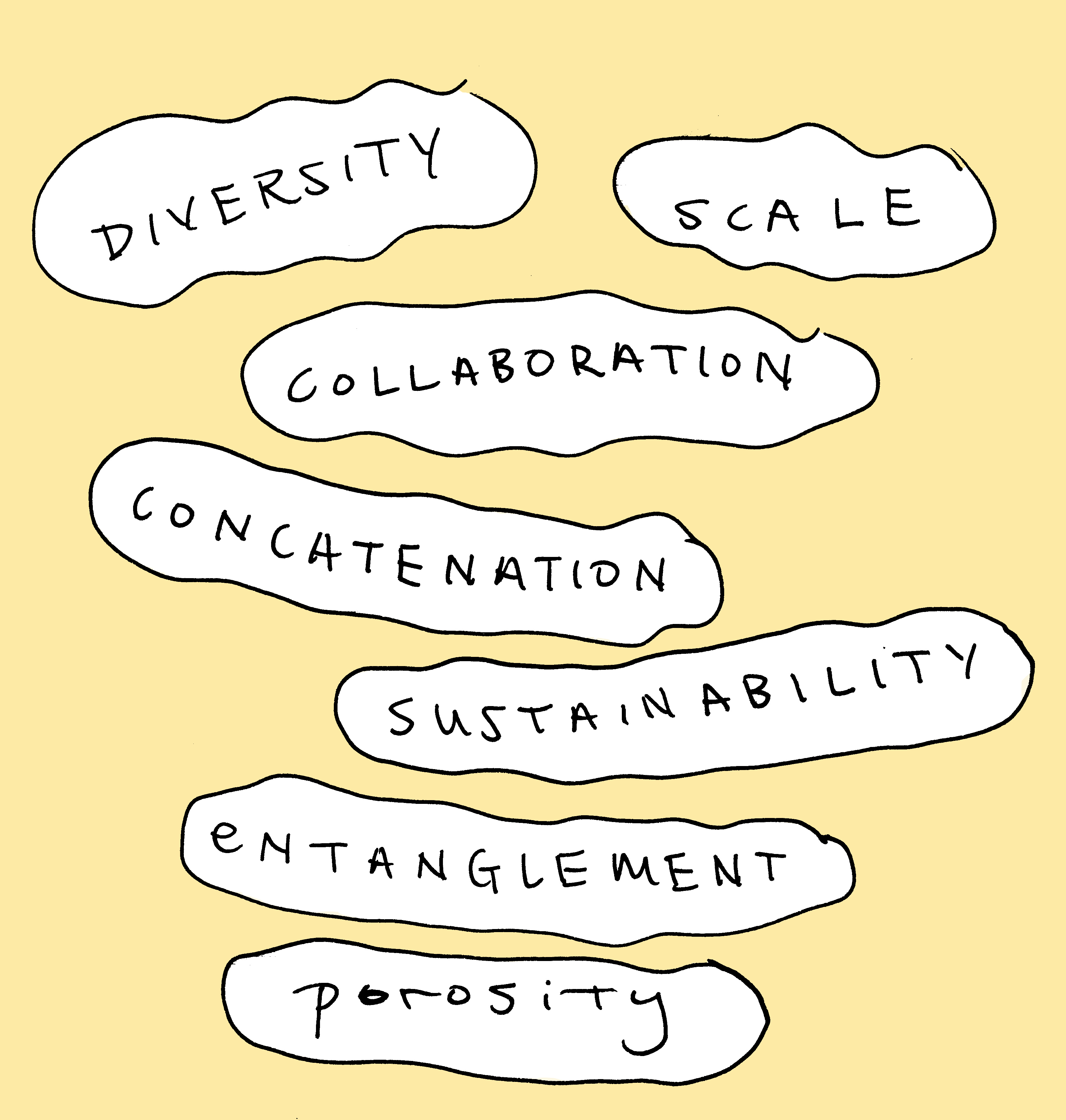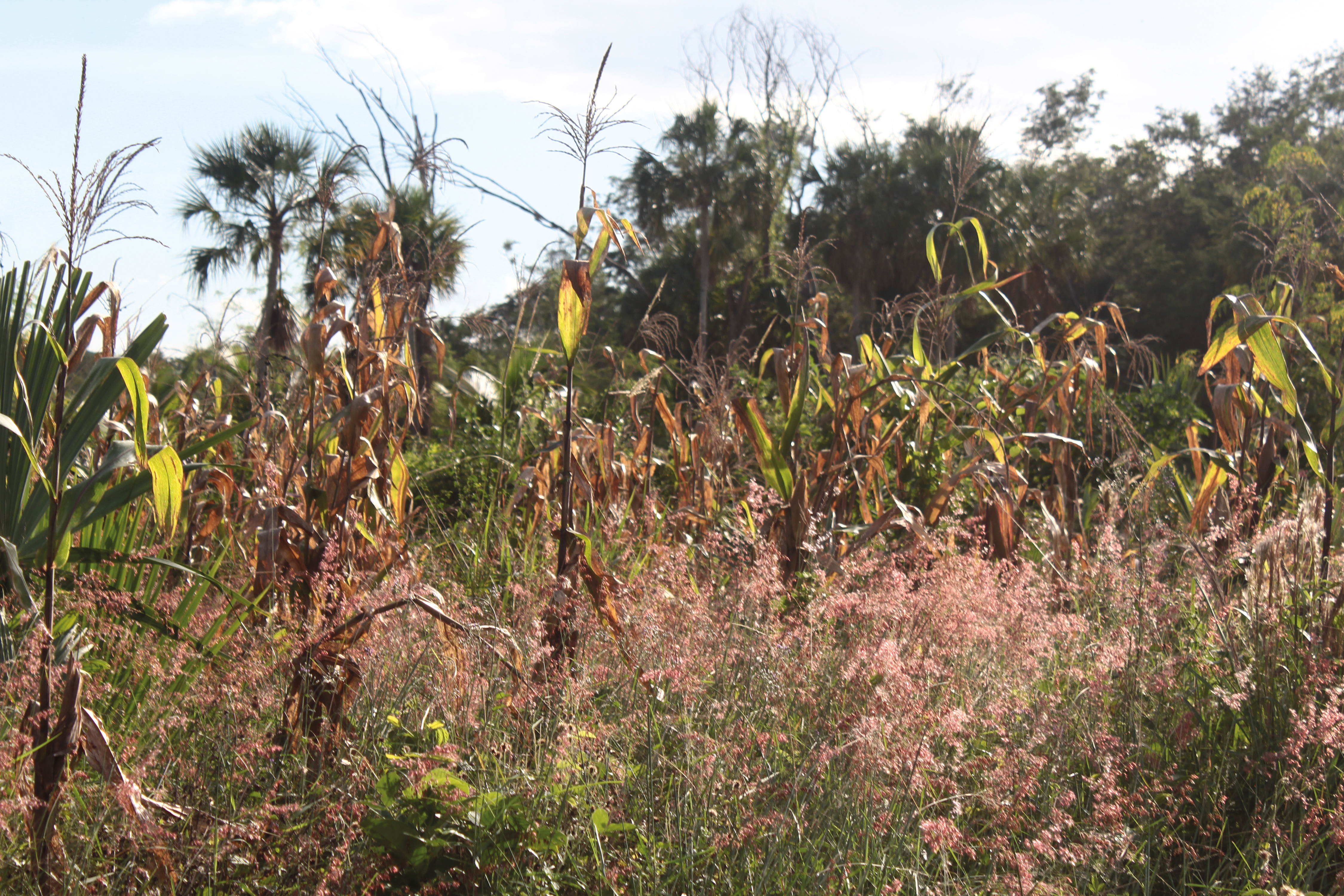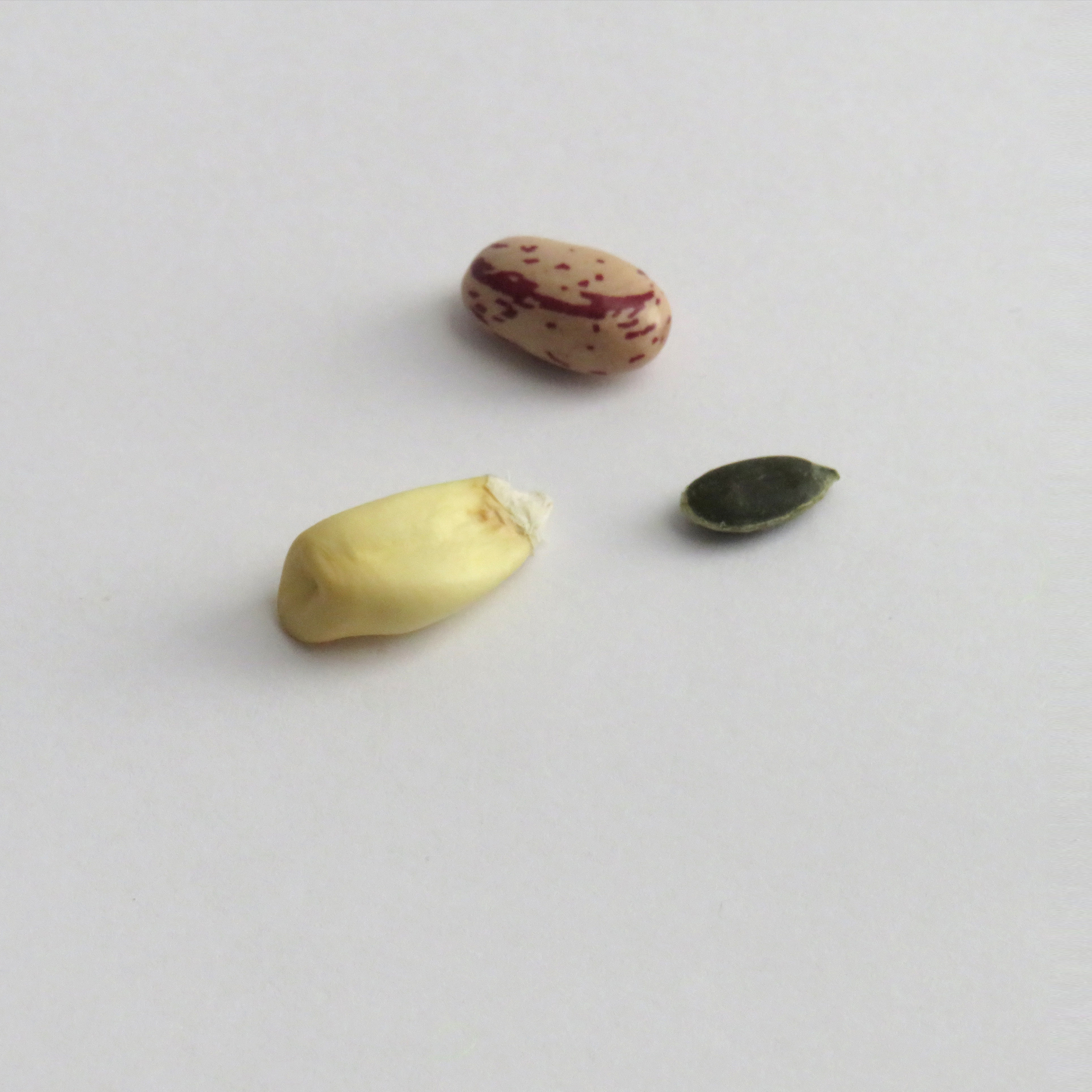

The milpa was the Aztec technique of agriculture common in Central America based on collaboration, entanglement, diversity, and mutual support between different species (critters, plants, and human social groups). It stands for sustainability providing food and multiple harvests throughout the year without degrading the soil as opposed to mono-cultural plantations. The milpa is an open form that consists of a small-scale model, a parcel of land, with a mix of entangled crops growing together and (re)inventing forms of collaboration by sharing and accommodating resources in the same space. In the milpa, the “Three sister”, beans, corn and squash establish a reciprocal relation. For example, the corn enables the beans to grow along providing vertical structure for the beans and the beans help the corn by holding nitrogen in the soil when it’s leaves fall to the ground.
The milpa is an open form as it allows diverse species to join the entanglement and create further interrelations. In the milpa one thing connects with many others. One on/for/ along/with/towards another in an ongoing process.
Following these prepositional forms of relation, making milpa as an art practice consists of enacting, translating the idea of milpa towards creating settings and learning environments based on its driving principles its driving principles such as collaboration, diversity, sustainability, regeneration, concatenation, scale, and sharing resources.



Mexican milpa. Photo by Iván Juárez